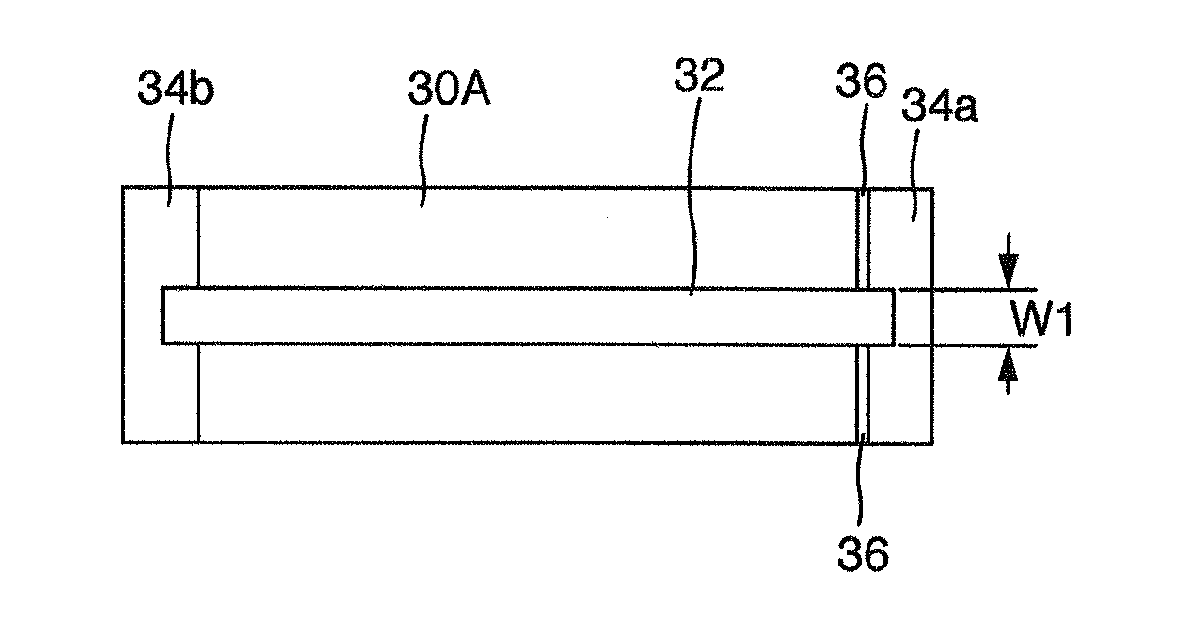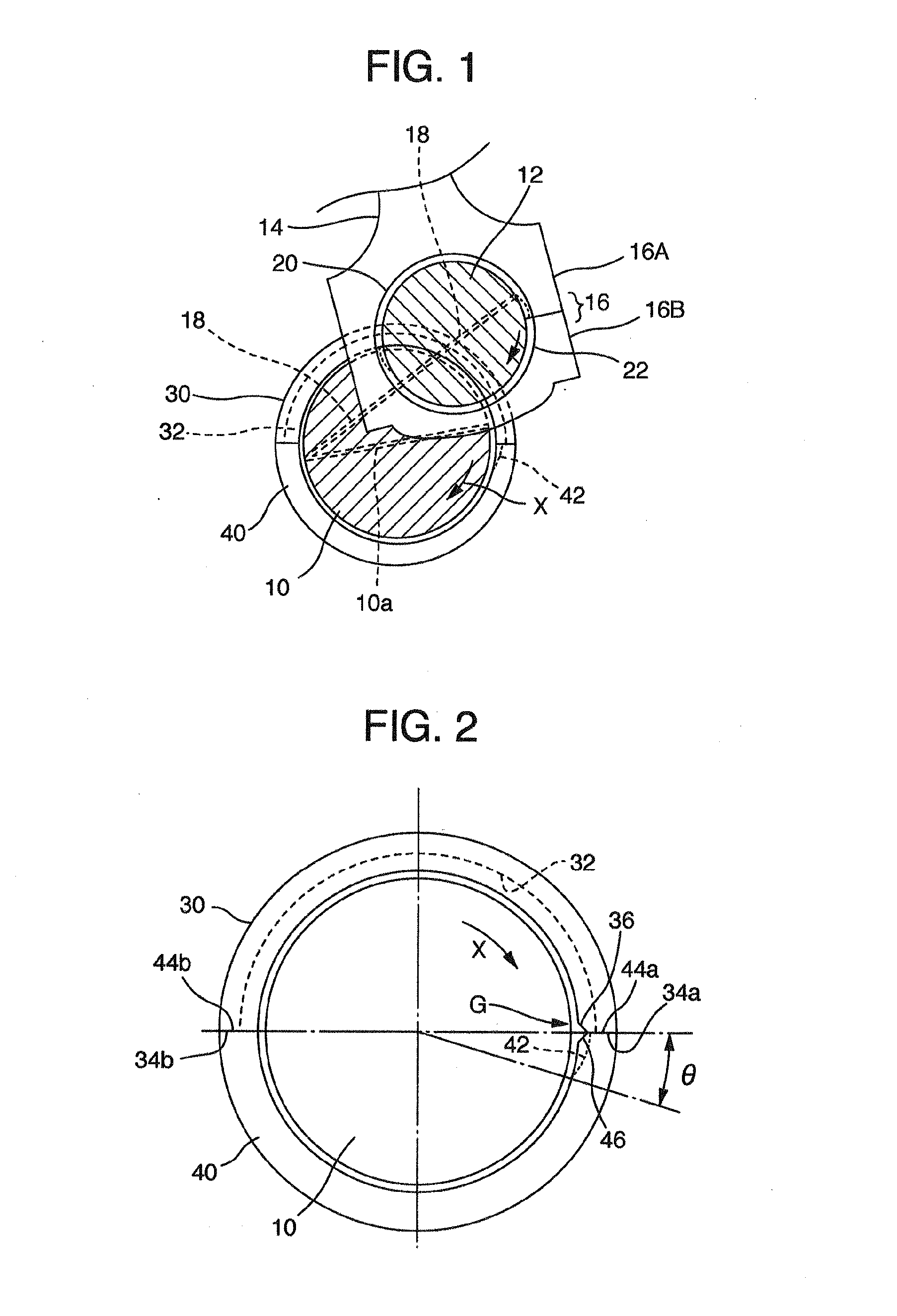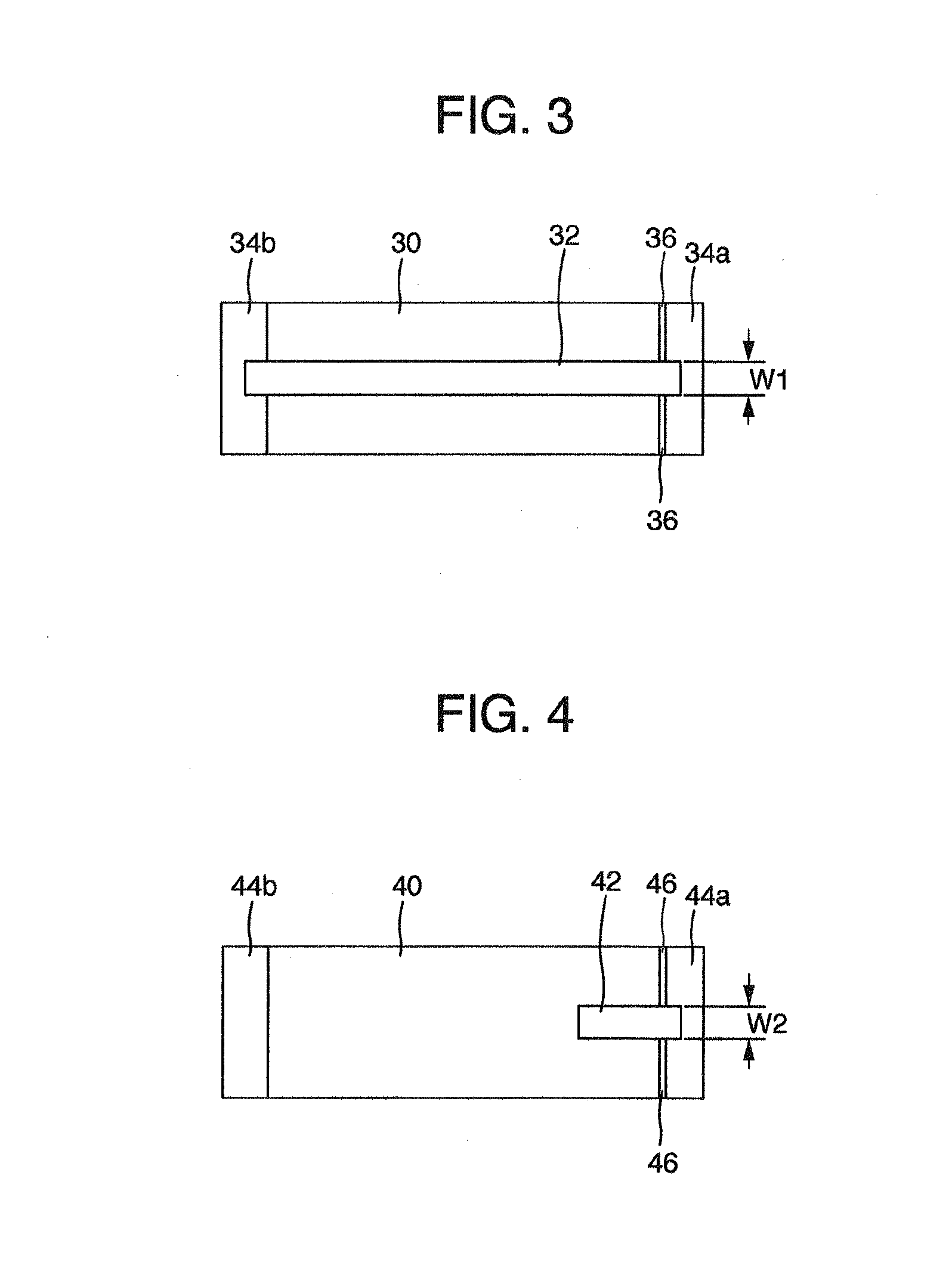Sliding bearing for internal combustion engines
a technology for internal combustion engines and sliding bearings, which is applied in the direction of bearings, rotary bearings, shafts and bearings, etc., can solve the problems of reducing the lubricity of the mating semi-cylindrical bearing, and affecting the lubrication of the bearing. , to achieve the effect of maximizing the blocking effect, good lubrication, and wide groove bottom width
- Summary
- Abstract
- Description
- Claims
- Application Information
AI Technical Summary
Benefits of technology
Problems solved by technology
Method used
Image
Examples
embodiment 1
[0039]FIG. 1 is a schematic view illustrating a crankshaft of an internal combustion engine respectively cut along a journal portion and a crankpin portion. A crank journal 10, a crankpin 12, and a connecting rod 14 are shown therein. The three members are in such a positional relationship in the depth direction of the figure that the journal 10 is farthest from the front, and the crankpin 12 is on the near side and is surrounded by a big end housing 16 of the connecting rod 14 that carries a piston on the other end.
[0040]The crank journal 10 is supported on a lower portion of a cylinder block of the internal combustion engine via a cylindrical sliding bearing including an upper semi-cylindrical bearing 30 and a lower semi-cylindrical bearing 40. A circumferential oil groove 32 is formed over the entire length of an inner circumferential surface of the upper semi-cylindrical bearing 30 located on the upper side of the drawing.
[0041]The crank journal 10 also has a diametrical through...
embodiment 2
[0056]A second embodiment shown in FIGS. 8 to 10 will be described. The second embodiment has the same configuration as the first embodiment except for some portions. Only differences therebetween will be described below.
[0057]The groove width (W1) of the circumferential oil groove 32 (a groove of an upper semi-cylindrical bearing 30A) and the groove width (W2) of the circumferential local groove 42 (a groove of a lower semi-cylindrical bearing 40A) satisfy a relational expression: W21.
[0058]A preferable relationship between W1 and W2 is 0.50×W121.
[0059]The relationship of W21 means that a region of 5% or more of the groove width from both the inner sides of the circumferential oil groove 32 and adjacent to the groove bottom is preferably blocked by the circumferential end 44a.
[0060]The relationship of 0.50×W12 is required for ensuring a flow passage sectional area to supply a sufficient amount of lubricant oil from the circumferential oil groove 32 to the circumferential local gro...
embodiment 3
[0063]A sliding bearing shown in FIGS. 11 to 13 includes an upper semi-cylindrical bearing 30B and the lower semi-cylindrical bearing 40. The lower semi-cylindrical bearing 40 is the same as the lower semi-cylindrical bearing 40 in the first embodiment. The upper semi-cylindrical bearing 30B differs from the upper semi-cylindrical bearing 30 in the first embodiment in the following point. An open groove end of a circumferential oil groove 32B is provided only at the circumferential end 34a. That is, the circumferential oil groove 32B extends from the circumferential end 34a to a position close to the circumferential end 34b, so that the open groove end is not provided at the circumferential end 34b. The sum (=a circumferential angle θ2) of a circumferential range in which the circumferential oil groove 32B of the upper semi-cylindrical bearing 30B is formed and a circumferential range in which the circumferential local groove 42 of the lower semi-cylindrical bearing 40 is formed is ...
PUM
 Login to View More
Login to View More Abstract
Description
Claims
Application Information
 Login to View More
Login to View More - R&D
- Intellectual Property
- Life Sciences
- Materials
- Tech Scout
- Unparalleled Data Quality
- Higher Quality Content
- 60% Fewer Hallucinations
Browse by: Latest US Patents, China's latest patents, Technical Efficacy Thesaurus, Application Domain, Technology Topic, Popular Technical Reports.
© 2025 PatSnap. All rights reserved.Legal|Privacy policy|Modern Slavery Act Transparency Statement|Sitemap|About US| Contact US: help@patsnap.com



